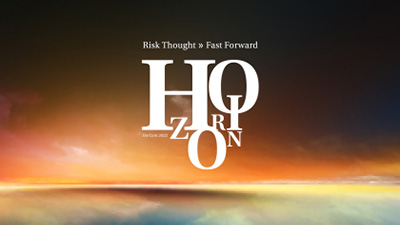From an HR perspective, the past three years were predominantly shaped by the challenges and crises that have influenced our activities since the beginning of the pandemic. The impact of volatility, uncertainty, complexity, and ambiguity – the VUCA world – has become more pronounced with each crisis that has hit both the economic environment of organisations and people`s personal lives.
Our world is marked by rapid change, continuing disruption, and instability. Geopolitical risks that boost this uncertainty add to the challenges in the global labour market. Organisations find themselves in a seemingly ongoing struggle to attract, retain and manage talent. But what implications does this have on our HR work?
A new approach
The pandemic has taught us to work in hybrid environments that connect co-workers mostly virtually. As a result, social interaction has decreased. Multi-channel communication has become part of our daily work routines. However, Eurostat statistics show that in 2021 only 13.5% of employees in the EU performed work from home on a regular basis. Even if 2022 shows a slight decrease in the area, remote work has come to stay, and yet another upward trend is expected for future years. Although the flexibility of the workplace enables individuals to better balance work and personal life, the downside of remote work is the lack of social interaction. That being ascertained, leadership teams and HR have recognised the importance of moving their people into the centre of their attention.
Creating social work environment
As ESG (environmental, social, governance) topics are gaining importance throughout organisations, HR must focus on creating socially sustainable work environments. The first step in this process is to create awareness and a common understanding of how the most relevant factors of social sustainability are linked to the corporate vision and mission. In this dynamic framework, organisations must seize the opportunity to rearrange their corporate DNA, create sustainable and secure workplaces and build a work culture that puts people first, focussing on individual needs. More and more candidates are now screening potential employers’ efforts towards climate protection, diversity, equity, and inclusion as well as ethical decision-making. Especially the generations X, Y, and Z want to contribute towards making the world a more liveable place again.
Sustainable Human Resource Management also considers future generation workforces and seeks to achieve long-term strategic alignment in human resource planning. However, the latter seems to be an increasingly challenging task. The much-cited and increasing shortage of skilled personnel as well as an ever-ageing workforce constitute the main obstacles.
Different generations – different values
The generation mix from baby boomers to generation Z on the labour market and within organisations creates a blend of values and relevant cultural features. The critical assets professional experience and expertise meet young academic knowledge and ambition. Digital natives and digital immigrants team up to achieve corporate goals. Whereas this may seem obstructive at first glance, the dimension “age” as outlined in the Diversity Charta offers numerous chances for individual development, skills transfers, sharing of knowledge and experiences as well as mentoring and sponsoring of talent. Putting the generation issue aside, the focus must be on merging the different values of each generation to create a common work culture.
But who are those talents and where can they be found?
Identifying, promoting, and managing talent
According to a Deloitte survey, more and more organisations are beginning to redesign working environments to attract and retain top talents regardless of their age. It is important to acknowledge that what differentiates talents from any other member of the workforce are their relevant performance potential, their competences, and their commitment towards achieving organisational goals. While talent is often associated with external resources, screening the workforce for potentially dormant talent within the organisation should become a permanent feature in the recruiting and people development processes.
Having identified talents, HR must regularly verify whether the skills and competences meet the requirements of the future workforce. Comparing current and possible future roles is part and parcel of a well-structured talent and succession management scheme to facilitate people development within the organisation.
Learning & Development Strategy
In the future, the focus will be on high-value human work, where upskilling and reskilling constitute the main objectives of talent strategies. Rapid change in knowledge and skills lifecycles demand a Learning & Development Strategy that provides learning modules that help identify and develop future skills and, more importantly, enable regular reviews. Learning programmes that foster education and individual development, opportunities that promote transparent and flexible career paths and broaden the range of tasks, rank high among talents. People want to be part of this transformation where businesses evolve into learning organizations. They want to play a role in the development of future skills as this provides them with orientation and the key to unlock innovation and creativity. However, this development needs a framework that allows a balanced error and feedback culture as well as trust in new work approaches.
Creating a sense of belonging
Undoubtably, HR has moved away from the lockdown-induced standstill of the recent past. HR is now trying to best counteract today’s crises of inflation, war, and energy shortages. It needs to move into the new year with a healthy portion of optimism. Whereas little can be done about these crises, HR can be instrumental in building work environments that employees feel connected to. People who feel a sense of belonging are more likely to identify with and stay in the organisation. For HR this means: To move the organisation forward, the first huge step in the right direction is creating a sense of belonging.
Related Insights
Are European Workforces Headed for a Mental Health Crisis and What Can Employers Do About It?
By providing adequate and appropriate mental health support for their employees, employers can not only improve the well-being and happiness of their workforce, but also enhance their competitive advantage and reputation in the market.
Strategic Resilience – Environment in Danger
Companies need to think through these topics on time and think them through strategically, so they can build up strategic competitive advantages
Sustainability and Risk Management in Car Fleets
Austrian Post has laid the right tracks for vehicle fleet sustainability in the haulage and logistics industry with its future-oriented strategy.









